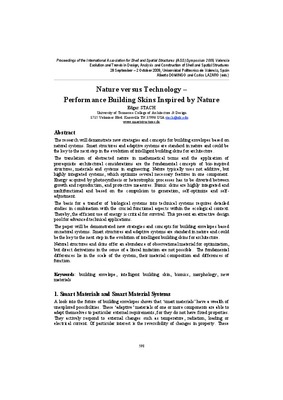JavaScript is disabled for your browser. Some features of this site may not work without it.
Buscar en RiuNet
Listar
Mi cuenta
Estadísticas
Ayuda RiuNet
Admin. UPV
Nature versus Technology - Performance building skins inspired by nature
Mostrar el registro completo del ítem
Stach, E. (2010). Nature versus Technology - Performance building skins inspired by nature. Editorial Universitat Politècnica de València. http://hdl.handle.net/10251/6845
Por favor, use este identificador para citar o enlazar este ítem: http://hdl.handle.net/10251/6845
Ficheros en el ítem
Metadatos del ítem
| Título: | Nature versus Technology - Performance building skins inspired by nature | |
| Autor: | STACH, Edgar | |
| Editor: | Domingo Cabo, Alberto | |
| Fecha difusión: |
|
|
| Resumen: |
The research will demonstrate new strategies and concepts for building envelopes based on natural systems. Smart structures and adaptive systems are standard in nature and could be the key to the next step in the evolution ...[+]
|
|
| Palabras clave: |
|
|
| Derechos de uso: | Reserva de todos los derechos | |
| ISBN: |
|
|
| Fuente: |
|
|
| Editorial: |
|
|
| Título del congreso: |
|
|
| Lugar del congreso: |
|
|
| Fecha congreso: |
|
|
| Descripción: |
|
|
| Tipo: |
|







